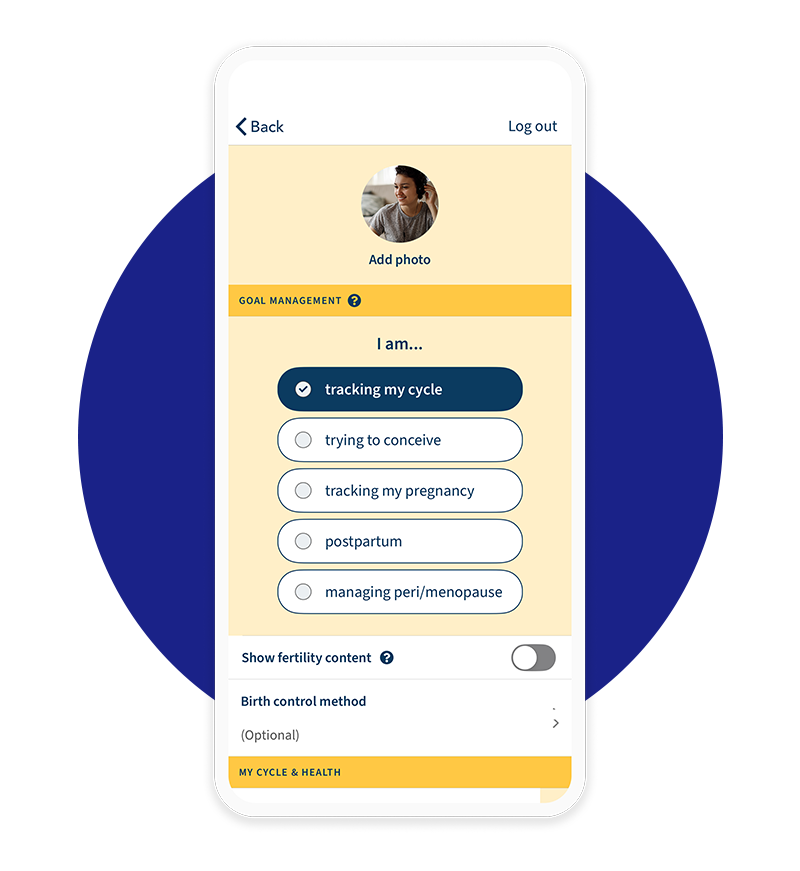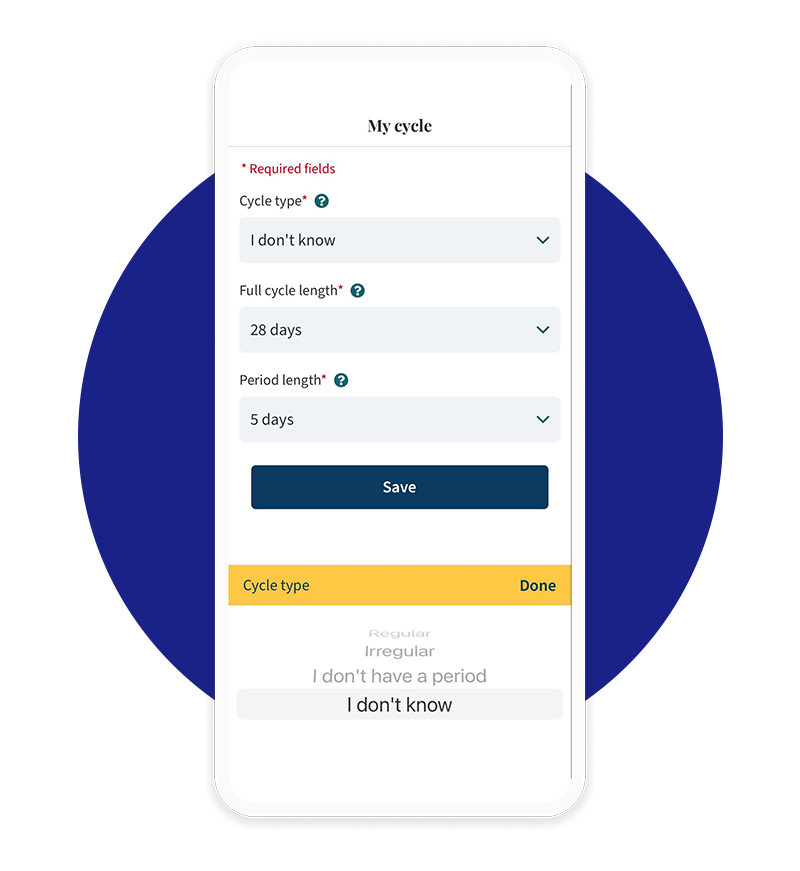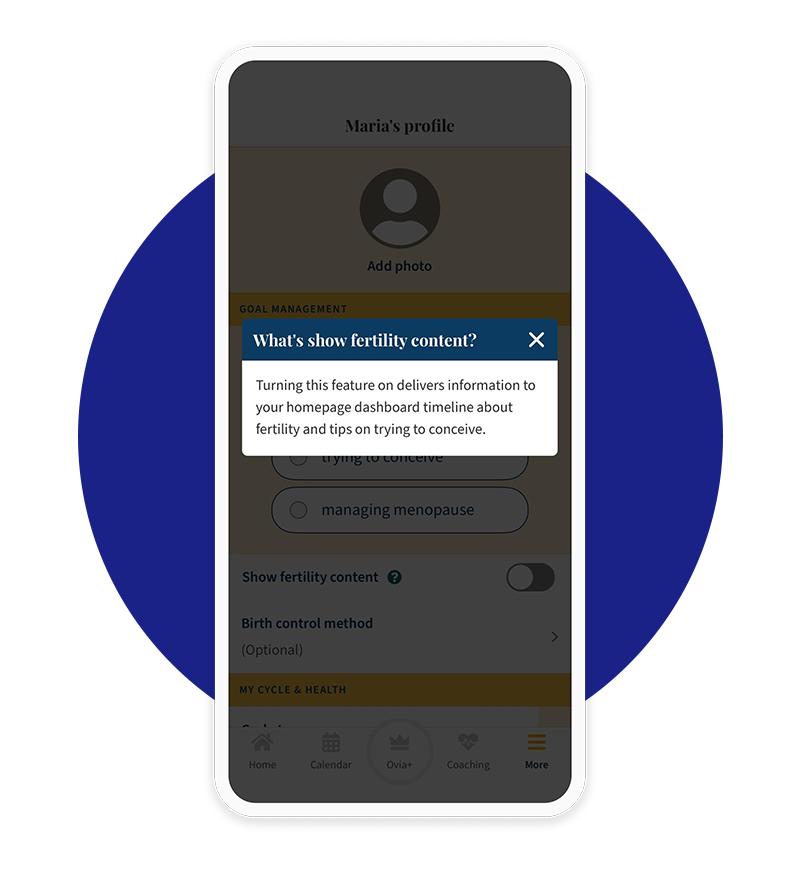Solutions
Cycle tracking
Millions of women use Ovia to better understand their
menstrual health, track their moods and symptoms,
and how it may impact their energy levels, immune systems, sleep health, and more.

73% of Ovia users report greater confidence in reproductive and/or cycle health after using our solution
Users select “tracking my cycle” as their health goal, and then enter the information they know about their cycle, including cycle type, and duration.
Users who are tracking their cycle to forecast their fertility window can select to see specific content about trying to conceive.
As you continue to track your cycle, our fertility algorithm – proven to be consistent with established clinical knowledge – is capable of using your self-reported data to predict your fertile window, ovulation, and menstruation.
 Gray droplets indicate period predictions
Gray droplets indicate period predictions
 Red droplets indicate member-logged period data
Red droplets indicate member-logged period data
- Members receive trends and averages of their past period data for better understanding of their cycles and potential changes
- Tracks hormonal changes across each cycle phase: menstrual, proliferative, ovulatory, and luteal
- Daily symptom tracking for flow, moods, symptoms, medications, sleep, activity levels, diet, and more.
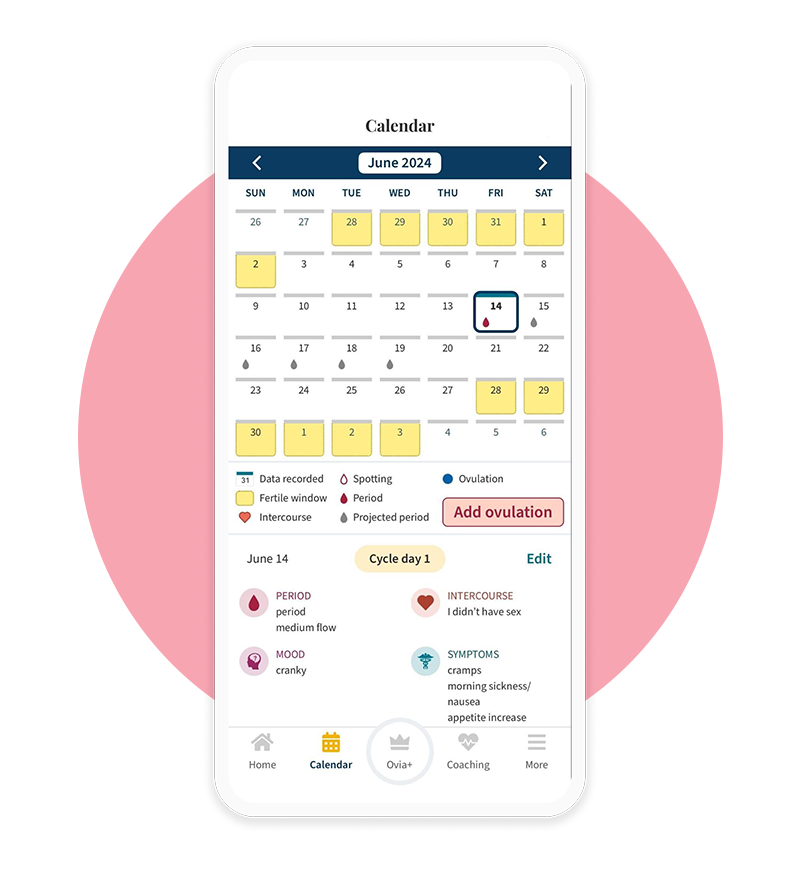
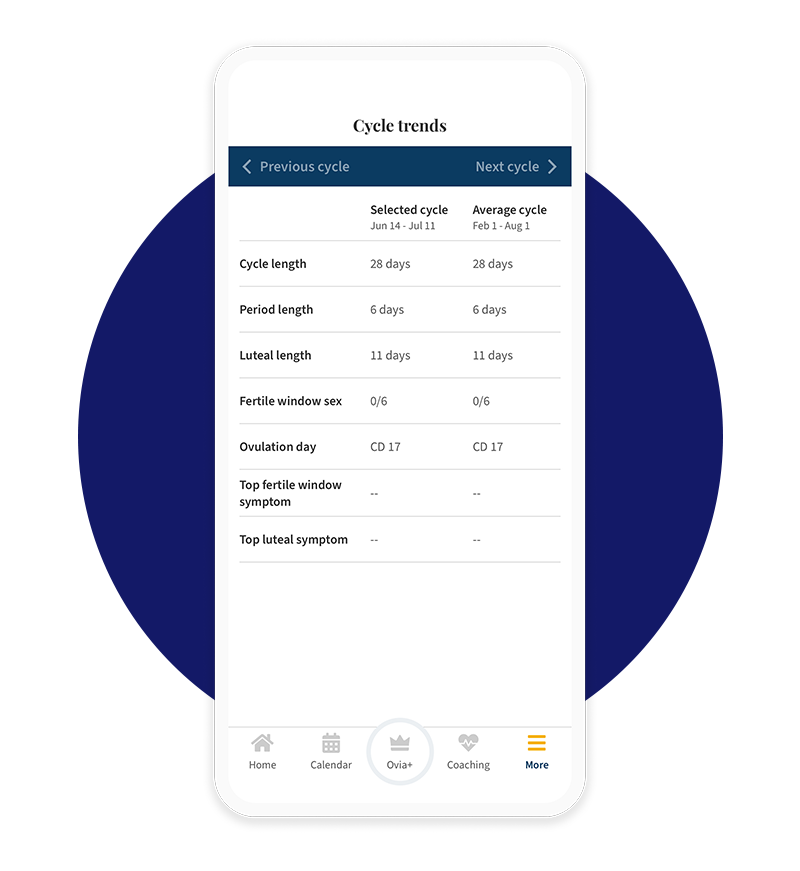
Easily find insights for each cycle including cycle length, phases, period length, ovulation predictions, and symptoms.
50 million women
As many as 50 million women in the United States track their menstrual cycles to better understand their bodies and identify any patterns or trends that may affect their health.

It has so many helpful features to track all aspects of your cycle and taught me so much about my body.
– Member, BCBS of Texas

I have found it to be the best and most helpful of the cycle tracking apps.
– Member, Labcorp

I love the accurate cycle tracking (never a surprise!!), and the ability to connect with a care team that is amazing, especially when there’s an off month.
– Member, Virgin Pulse
Ovia members are reading

When’s your period?
After ovulation, your levels of the hormone progesterone spike. This hormone thickens the lining of the uterus in preparation for a fertilized egg. When your body recognizes that there is no fertilized egg, progesterone levels fall which causes the uterine lining to shed. This is what you see when you get your period.
Interested in learning more?
Schedule a demo here

